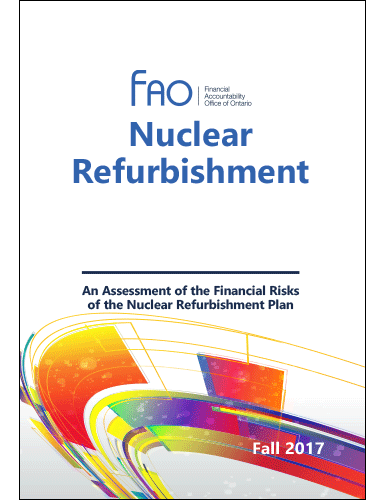Nuclear Refurbishment Report

The FAO’s report reviews how the nuclear refurbishment plan will impact electricity ratepayers and the Province, and identifies how financial risk is allocated among ratepayers, the Province, Ontario Power Generation and Bruce Power.
Nuclear Refurbishment Report, Financial Accountability Office of Ontario, 2017.

